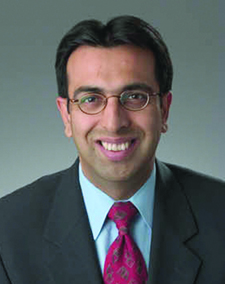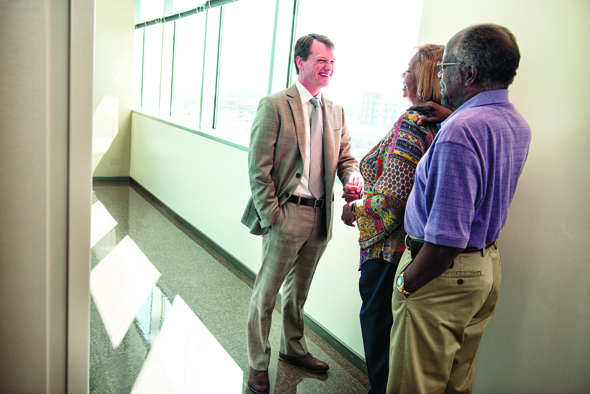Texas Oncology Cancer Prevention Series: Treating Cancer with Transplants
Traditionally. the term leukemia has been a very scary one for most people. Over the years, there has been a great deal of publicity around bone marrow transplants. This exciting treatment has evolved and now there are many versions of transplants. The technique has become much safer and has been critical in our ability to treat several different types of cancers in addition to leukemia.
In this month’s article, Dr. Sanjay Sethi discusses transplants and also talks about the need for people of our ethnic background to register with the national marrow database.
– Vivek S. Kavadi, M.D.
By Dr. Sanjay Sethi
Cancer is an equal opportunity offender. It can strike anyone at any time. It can also occur just about anywhere on your body, including your blood stream. According to the Leukemia and Lymphoma Society, an estimated 1,185,053 people in the U.S. are either living with, or are in remission from, leukemia, lymphoma or myeloma.
Adults have about five quarts of blood circulating in their bodies, which is made of red blood cells that help carry oxygen through the body and white blood cells that help fight off infection. Your body continually replenishes its blood supply by growing new red and white blood cells and plasma cells from stem cells in adult bone marrow.
There are three primary forms of blood cancers. Leukemia is caused when your body produces abnormal white blood cells. It starts in the bone marrow, the soft tissue inside the bone, where blood cells develop.
Lymphoma is a blood cancer of the immune system and can be found in the blood or lymph nodes. Multiple myeloma is a cancer that begins in the plasma cells of the body.
When we treat cancer, we most commonly use surgery, radiation therapy, and chemotherapy. Our goal is to shrink or eliminate the cancer, and we often use these tools in combination to give patients the best outcomes.
Unfortunately, when a blood cancer develops, it cannot be surgically removed. Oncologists must focus on the source of the cancerous blood cells—cells that could be anywhere in a patient’s blood stream, lymph nodes, or bone marrow.
Blood and marrow transplants give patients another option for treating these cancers. Healthy blood stem cells are collected from either the patient or a donor, whose genetic makeup closely matches the patient.
The patient then receives high dosages of chemotherapy, which kills the cancer-producing cells throughout the body. The healthy blood stem cells are then injected into the patient, where they begin to grow and reproduce to replenish healthy cells.
This treatment was first developed in 1968, but advances have made it far easier for donors to donate marrow to patients and for patients to supply their own healthy adult stem cells. There have also been advances to make it easier for patients to recover from the transplant, and, most importantly, increase the patient’s chances of living cancer-free.
Several decades ago, “blood and marrow transplants” conjured up thoughts of pain for the donor and a month or more of recovery in isolation in a specialized hospital unit for the patient. However, techniques have substantially improved.
While the transplants are still completed in specialized hospital units, the recovery period is often outpatient. “Mini transplants” have reduced recovery time and made the experience less taxing for many patients. The donor experience has become far more convenient with less discomfort.
There is a nationwide shortage of blood and marrow donors, and ethnic minorities are significantly underrepresented in donor registries. Registering to be a donor is easy—visit www.BeTheMatch.org to get a mail-in packet to register or attend a donor drive in your area. With a simple cheek swab, you can enter a national registry of potential donors.
You may never be called to be a donor, but by registering, you give patients another opportunity for hope. If you’re interested in learning more, visit www.TexasOncology.com.

Dr. Sanjay Sethi is a medical oncologist at Texas Oncology–Sugar Land, 1350 First Colony Blvd. in Sugar Land, Texas.

